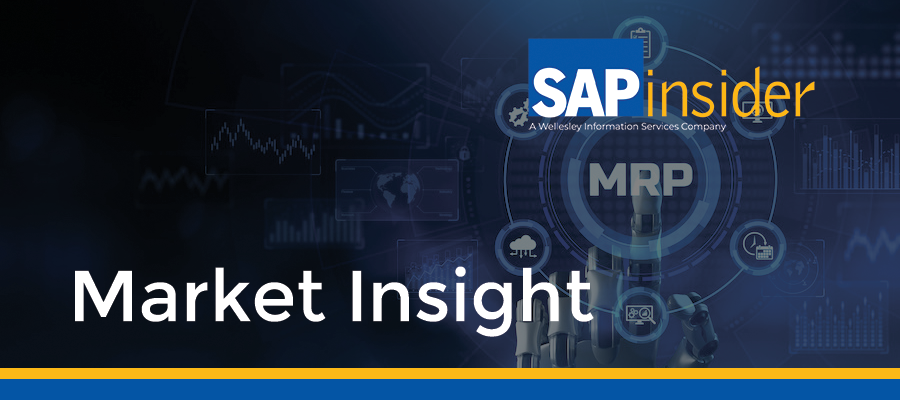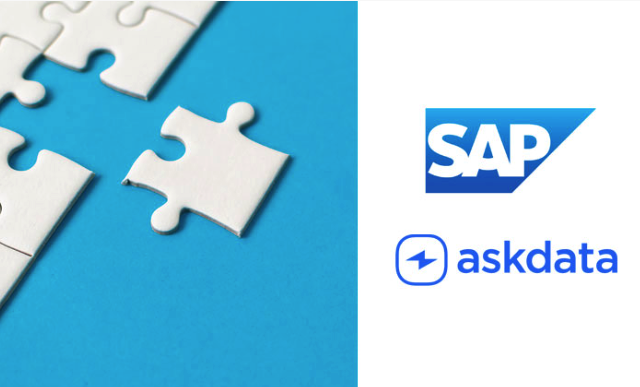Utility Digital Transformation Through Analytics
Dell EMC, Navigant, and Intel Weigh in on Strategy to Institutionalize Analytics
Ken Murphy, SAPinsider: This is Ken Murphy with SAPinsider. The business landscape for utilities is undergoing rapid change, much of it stemming from an exponential growth of data from smart meter deployments. The emergence of advanced metering technology and two-way energy management has created new opportunities for utilities in how they generate and sell power to a consumer. To capitalize on these opportunities, utilities are devising strategies to digitally transform through analytics.
To learn more about the drivers, reasons, opportunities and challenges that utilities face in implementing an analytics strategy, we spoke with industry experts from Dell EMC, Intel, and Navigant, who spoke about their unique partnership, specifically for utilities that run an SAP environment.
Joe Jankosky is the Director for Energy Market Optimization solutions at Intel. He develops partner ecosystems for utilities to solve their smart grid challenges. He says that the changing utility business landscape is unprecedented in scope.
Joe Jankosky, Intel: This disruptive change is historic, you’re having more loads move to the edge, you’re having the transformation of the ‘prosumer’ where residential and building owners are both consuming and producing energy, and I think that that is creating a profound change for the electric utility industry.”
Murphy: Jeff Richman is a Director within the Energy practice at Navigant with nearly 30 years of utility industry experience, providing strategic and tactical direction in smart meters and big data analytics. Richman says that industry changes are a result of an influx of data.
Jeff Richman, Navigant: The smart meter data has created – for those utilities that have adopted and embraced it – it’s created a total tsunami of information and what it has shown to utilities is that even though they’ve gone from one reading a month to a reading every hour and in some utilities it’s quarter hour, what they’re finding is that that information is actually not enough. They’re looking for more granular data, they’re looking in terms of intervals, sub one-minute intervals for forensic research.
Murphy: Utilities, then, have surpassed the original business case for implementing smart meter technology, which traditionally focused customer accounting, billing exceptions, and theft prevention. Now, those operational benefits barely scratch the surface for what the full embrace of digital technologies and analytics can deliver. Here is Richman:
Richman: So once those traditional benefits have been realized and the business case, it’s those executives that have spent $800 million- $1 billion that are saying, “OK, what’s next?” And what’s the higher hanging fruit? And the higher hanging fruit once a utility reaches a critical mass of that new strategic asset of that granular data then utility starts scaling that maturity curve and begin going more for those advanced benefits that are not as so low-hanging but are still very, very real to a utility.
Murphy: Among those benefits of advanced analytics, says Richman, are advanced load forecasting to better assess the performance of energy efficiency programs, technical line loss quantification and elimination, and precise month-end electron billing.
Getting there, though, is easier said than done. Here is Jankosky.
Jankosky: I’ve been to different utilities around the world and what I hear is that the utilities are getting this information from smart meters, but it’s such a – as Jeff said – such a tsunami of information, they can’t process what they have. They can’t find the needle in the haystack because there’s such a deluge of information that we need more analytics. We can’t just keep pushing all of this to the cloud; we need to do some analytics at the edge so we’re only pushing up anomalies or we’re only pushing up information in an intelligent form rather than just pure data.”
Murphy: Chris Ritter is a principal systems engineer in the Dell EMC SAP solutions practice, providing technical expertise for all solutions related to SAP and data analytics. The Dell EMC, Intel, and Navigant partnership, he said, was borne in part because of the need for edge analytics and the challenges it brings.
Ritter, Dell EMC: That requires us as a manufacturer to provide technology that can be powerful enough to execute functions at the edge; bring in volumes of data but not compartmentalize it to where it can’t be consumed by somebody else. So we’ve mastered that through gateway technologies and partnerships and so-forth, which also means that we can start pushing those things to the edge. And one of the examples would be where you develop your analytics scenarios, your predictive maintenance scenarios, your consumption scenarios in a large dataset provided by something at a core, in a core datacenter, for example HANA – and then move those functions in smaller, micro-sets to the edge. And you can start to leverage the technology that you see that you’ll find within SAP. So by being able to couple the partner ecosystem, right, that’s our job. To make those things happen.
Murphy: Options afforded by open technology standards is a key element for utilities in their analytics journeys, and another driver behind the partnership between Dell EMC, Intel, and Navigant. Here again is Ritter:
Ritter: We look at in from a holistic picture. There are different ways to do things. And one example is that if you look at it from an academic perspective, several years ago you had open source technologies that became pervasive because they were inexpensive. And one of the examples is Hadoop. And it is very powerful from an analytics and data aggregation perspective, but the challenge that you have is that it does not provide 100% of the technologies or the solution that a utility provider would need, especially somebody who is in all three phases, from a retail perspective, a generation and distribution standpoint, they want to see the iteration of data as it goes through its lifecycle vs. just doing analytics to see and find a needle in a haystack so to speak.
So why we’re different is that we focus on coupling all the technologies; some of them are meant to drive cost back. Some of them are meant to provide the things that the utility customers need from an application, right, so that’s the traditional (things like) availability, speed, scalability for a massive user community to consume the data in the way they see fit. We can’t do that in a singular academic function. What I mean by that is for example if I look at a single open source technology designed to do one thing, it does not provide me the mechanisms to go and complete a transaction from Point A to Point Z, so the example would be if I’m grabbing data from the edge and we want to see polling every second we want that data to be actionable, so as soon as I find that needle in a haystack it triggers some other function to happen. And by having that in one co-located ecosystem it’s very efficient, it’s very effective. I don’t do things like copying data, I don’t impede my ability to act quickly because I have to go from system to system and (it) needs to be updated. It’s all interactive in and of itself and it still follows the same traditional requirements that companies have to deliver uptime to their consumers.”
Murphy: A lot depends, then, on what a specific utility wants or needs to do with advanced analytics, which speaks to the importance of conducting an assessment of a utility’s current business and infrastructure landscape. In general, a utility will fall into one of three distinct profiles as it relates to a digital transformation through analytics: first mover, fast follower, and greenfield. Here again is Jeff Richman of Navigant:
Richman: No two utilities are alike. What we’ve done is try to carve out what we deem to be three significant elements of maturity, or levels of maturity for a utility. But there’s a shade of gray; there are utilities that are first movers in some things, and greenfield in others, and no two utilities are at the same place and on an ongoing basis they really do need to re-assess where they are toward their objective of getting to that state of maturity and you can’t do that without good governance and a good roadmap to look at things more from not a siloed perspective but more from holistic and not a one-and-done sustainable environment at the enterprise level that brings a culture of innovation to the utility.
Murphy: Jankosky explains that the state of maturity has a lot to do with external forces.
Jankosky: You do see the largest utilities worldwide that have the resources to dig into some of these more challenging use cases being the first movers. But you also see utilities regionally that are impacted by events or policy – and those could be the over-building of DER’s (distributed energy resources) in Germany or in other parts of Europe, creating problems or issues that they have to deal with. They could be newly de-regulated markets like in Japan that sort of got a double whammy with Fukushima and having to react to that in just a short number of years, so there are some regional differences that force markets in certain parts of the world to react quicker than others.
Murphy: According to Ritter, matching a solution or set of solutions to a desired use case, outcome, or workload is another differentiator of the Dell EMC, Intel, and Navigant partnership:
Ritter: There may be a situation where somebody is ahead of the curve from a trading perspective, and that is much more of a transactional and high-speed execution and analytics around supply and demand use cases and so forth vs. perhaps residential monitoring of consumption. That’s a different style of deployment from a technology perspective and a different use case. And so we would look at it from that perspective and fit the right need and from our point of view we have the vertical and horizontal ability, so we can grow up in terms of scale up meaning horsepower for example from a speed perspective, or it could be horizontally based on the type of consumer that is using it, all the way from field engineers that are doing break fix from a home or an install to vegetation management from drones to the individual looking at the application at home and their consumption, the line of business individuals within each department of the actual organization, and so that drives that and we have the ability to provide a solution in every one of those facets. And so I’d look at it much more from that perspective vs. saying there’s a prescriptive solution for a follower vs. a leader in that scenario.”
For more information, please reach out to your Dell EMC, Intel or Navigant account team. And for further information on the role of analytics in a changing utility industry, the “Utility Digital Transformation through Analytics” white paper can be accessed via the link on this page.








